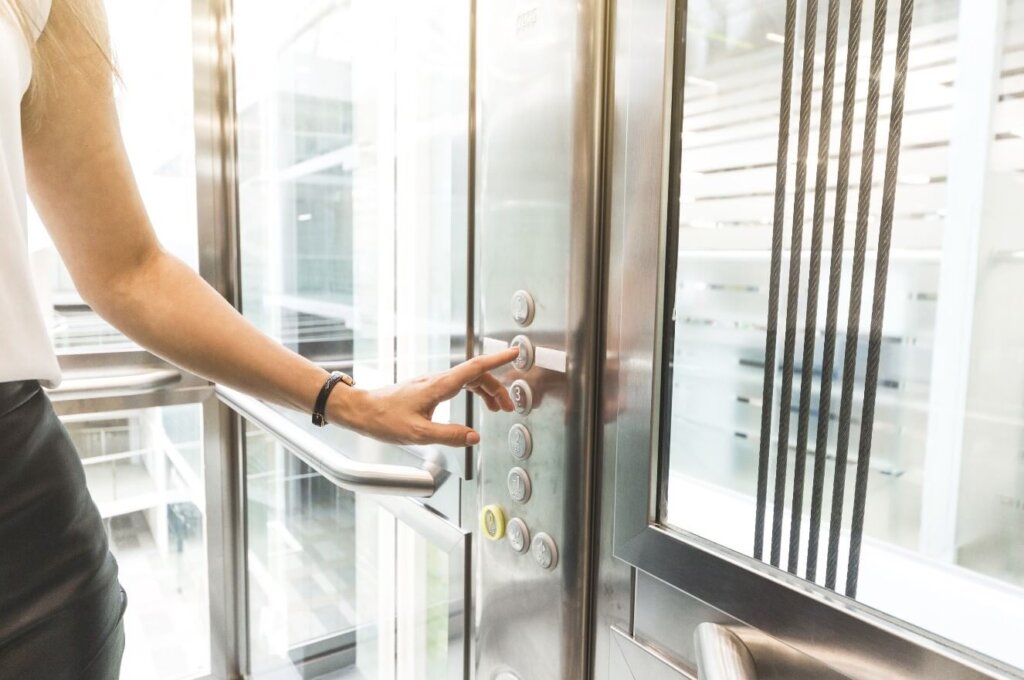All of us have heard, and most of us have spoken, the adage, “A picture is worth a thousand words.” By and large the point is correct. But not always. The elevator button panel is a case in point.
You’ve probably been there. You get on the elevator with time to spare, but just as the door starts to close, one more person tries to board. Maybe it’s the managing partner of your law firm; maybe it’s the new sixth floor receptionist you’ve been hoping to meet. You want to stop the door from closing and, let’s face it, you want credit for your courtesy.
You have only a nanosecond to act. You take a quick look at the button panel. The only button with a word on it says emergency. That can’t be the one you need, even if it is the managing partner who’s trying to board.
All the other buttons have floor numbers, except two that have graphic symbols on them: ˂ ˃ on the left button and ˃ ˂ on the right.
You know that one must mean open, and the other close. But in the pressure of the moment, you can’t decide which is which. It’s not just that the meanings are not self-evident; they seem downright nonsensical. Aren’t those the math symbols for less than and greater than? And if so, don’t they cancel each other out?
Far from identifying yourself as a paragon of courtesy, you’re now branded as the firm’s all-time most selfish person, deliberately closing the door in the face of a would-be passenger.
You make a split-second decision. You hurriedly press one of the buttons. Sadly, it’s the wrong one. You’ve not only failed to keep the doors open; you’ve sped up the closing process! What’s more, that would-be passenger, along with everyone already on the elevator, has caught you in the act. Far from identifying yourself as a paragon of courtesy, you’re now branded as the firm’s all-time most selfish person, deliberately closing the door in the face of a would-be passenger.
Now let’s imagine that the elevator buttons are labeled with words rather than symbols: open on the left button and close on the right. You know instantly which is which. You lean toward the panel, not ostentatiously but with enough flourish to enable the prospective passenger to recognize your thoughtful gesture. The managing partner steps aboard, acknowledges your courtesy with a smile, and asks (not for the first time) your name. Or the new receptionist smiles at you gratefully and strikes up the conversation you’ve been too shy to initiate.
That’s when a word is worth a thousand pictures.










